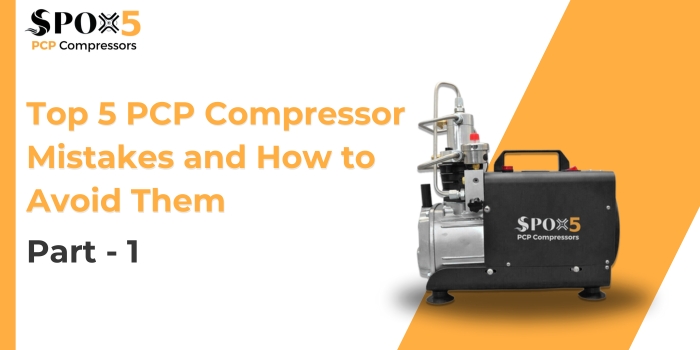PCP (progressing cavity) compressors are the workhorses of the compressed air world, powering everything from air rifles to industrial applications. But like any powerful tool, they require proper handling to ensure safety, efficiency, and longevity. Here, we explore the top 5 common mistakes with PCP compressors and provide solutions to keep your air source running smoothly.
Mistake #1: Ignoring the Manual
The Problem: Every PCP compressor model has its own specific capabilities and limitations outlined in the user manual. Ignoring these guidelines can lead to a world of trouble.
The Consequences: Skipping the manual can result in:
- Reduced Efficiency: Operating outside the recommended pressure range or using the wrong settings can strain the compressor and decrease its overall efficiency.
- Premature Wear and Tear: Pushing the compressor beyond its limits can accelerate wear on internal components, shortening its lifespan.
- Safety Hazards: Operating with improper procedures or exceeding pressure limits can increase the risk of accidents and injuries.
The Solution: Make the user manual your best friend. Familiarize yourself with:
- Recommended Pressure Range: Each model has a specific pressure range it’s designed to handle. Always operate within these limits.
- Compatible Fluids: The manual will specify the types of fluids the compressor can handle safely. Using incompatible fluids can damage internal components.
- Maintenance Schedule: The manufacturer recommends a specific maintenance schedule for oil changes, filter replacements, and inspections. Regular maintenance ensures optimal performance and longevity.
Mistake #2: Neglecting System Design
The Problem: Focusing solely on the compressor itself while neglecting the entire system design can lead to performance issues.
The Consequences: A poorly designed system can put undue stress on your PCP compressor and hinder its ability to perform efficiently:
- Improper Pipe Sizing: Undersized pipes create excessive back pressure, reducing the compressor’s effective PSI output and potentially leading to overheating.
- Inadequate Filtration: Failure to use proper filters upstream of the compressor can allow contaminants to enter the system, causing damage to internal components.
- Ignoring System Backpressure: Ignoring or not managing backpressure from downstream equipment can reduce the compressor’s capacity to deliver the desired flow rate.
The Solution: When planning a PCP compressor system, consider all aspects of the design:
- Pipe Sizing: Consult a qualified engineer to determine the appropriate pipe diameter based on the required flow rate and pressure drop.
- Filtration: Install appropriate filters at the compressor inlet to remove any contaminants from the incoming air or gas.
- Backpressure Management: Identify potential sources of backpressure downstream and implement strategies to minimize it, such as using larger diameter pipes or installing pressure relief valves.
Stay tuned for Parts 2 & 3 of this blog series, where we’ll explore additional mistakes to avoid and delve into proper maintenance practices for your SPOX5 PCP compressor!

